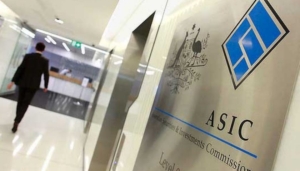Well it was inevitable I guess. After 10 months without community transmission, Perth, Peel and the South West were forced into an abrupt lockdown last week after a security guard tested positive for the highly infectious UK variant of COVID.
The announcement by Mark McGowan sent shoppers into a foolish frenzy and forced business owners into a strenuous Sunday session to ready the team to work from home, or worse, close the doors and stand staff down.
When we went into voluntary lockdown in March last year, there was uncertainty around whether those stood down would get paid. But the Government soon announced the JobKeeper scheme which removed the issue for most.
This time around most businesses are no longer eligible for JobKeeper. So what happens now? Do you pay workers wages during lockdown or not?
Where staff can work from home, the rules are pretty clear. You should pay your team for the work they do, similar to if they were working at your premises. They are also entitled to normal entitlements like annual leave and sick leave. You must be careful to still comply with all OHS requirements, and may need to provide guidance on what constitutes a safe home office environment.
Where staff are stood down as a result of a Government imposed lockdown, and there is no possibility of working from home, you are generally not required to pay workers under Fair Work laws. But you might need to consider whether employment contracts or specific awards override this in your industry. You will also need to pay enough wages during lockdown to meet any JobKeeper obligations. You can of course choose to pay your team while they are stood down.
Employees can choose to use any accrued leave they have during the lockdown period, but unfortunately casual staff and contractors won’t have this option. You can’t refuse a request for leave without a good reason, and you can’t force staff to take annual leave.
A recent Court decision ruled that workers who are stood down in accordance with the Fair Work Act are not entitled to paid sick, carer’s or compassionate leave during that time. Fair Work are currently adopting this view, although an application has been made to appeal the decision.
Under certain awards (listed on the Fair Work website), all workers, including casuals can take up to two weeks of unpaid pandemic leave, without any accrual requirements. This leave can be used when there is a Government enforced lockdown, or when employees are directed to self-isolate or quarantine.
Here’s hoping the restrictions are lifted or at least lightened either by the time you read this blog or soon after, and that employers and their workers don’t have to re-visit this issue in the future.
Related blog:
JobMaker Hiring Credit – is my business eligible?
Author: Mark Douglas
Email: mark@faj.com.au

 The Jobmaker Hiring Credit scheme was announced as part of the 2021 Budget as an incentive for businesses to create new jobs and have the cost subsidised. Eligible employers can receive $200 per week for each new employee aged 16 to 29 years, or $100 per week for new employees aged 30 to 35 years, hired between 7 October 2020 and 6 October 2021, for up to 12 months.
The Jobmaker Hiring Credit scheme was announced as part of the 2021 Budget as an incentive for businesses to create new jobs and have the cost subsidised. Eligible employers can receive $200 per week for each new employee aged 16 to 29 years, or $100 per week for new employees aged 30 to 35 years, hired between 7 October 2020 and 6 October 2021, for up to 12 months.



 A very simple example might be to plot your sales of various product categories over the last 5 years. Which product groups are trending up, and which are trending down? Once you know that you might make some business decisions about your product lines based on the results.
A very simple example might be to plot your sales of various product categories over the last 5 years. Which product groups are trending up, and which are trending down? Once you know that you might make some business decisions about your product lines based on the results.


